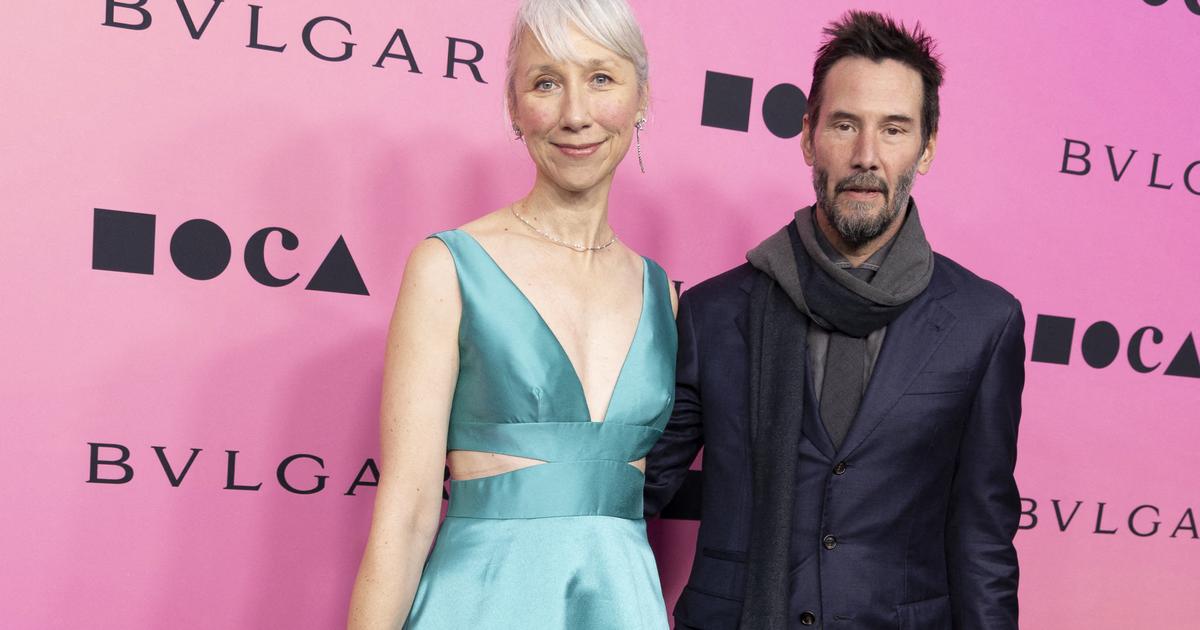The
Pokémon
video game saga
celebrates its twenty-fifth anniversary this Saturday, February 27.
Twenty-five years of stories, adventures, and experiences;
not just through consoles.
Entertainment and culture have given a privileged space to the name of this license during the last five years, a macerated paper based on polishing the formula with each of the generations of deliveries that make up this phenomenon.
From the
original
Red
and
Green
editions
of the popular Game Boy handheld console to the latest Nintendo hit, Nintendo Switch, with
Sword
and
Shield
This idea originally conceived by the Japanese Satoshi Tajiri has become the media franchise with the highest income in the history of entertainment;
more than 92,000 million dollars invoiced.
There are a number of elements that have remained intact over the course of these twenty-five years, however, and it is the philosophy behind each of the video games that make up the main series.
Eight generations of creatures, eight canon regions, in a total of five different console cycles.
At the same time, several generations of young people who have grown up alongside
Pokémon
;
that have started their journey with the saga through one of the installments that make up each pair of iterations.
And that business model, based on the dilemma between choosing one or the other cartridge, is also part of that philosophy.
Because the keys to the success of
Pokémon
, with which without them it would be impossible to conceive the video game industry, are
collection
,
exchange
and
communication
.
When its creator, Satoshi Tajiri, went to school in the modest city of Machida, in Tokyo prefecture, this young man with a passion for catching insects grew up in the seventies surrounded by nature with the illusion of getting all of them.
His residence, located in an eminently rural environment, was the trigger for an exacerbated passion to document this collection of critters in notebooks in an encyclopedic way.
All this led to the distribution of magazines in his school, in the desire that it were others who felt that feeling of "getting hold of everyone."
But the
fanzines
fell short.
Tajiri was fascinated by arcade machines;
so much so that he took apart his Famicom console to learn how it worked and learn, after all, how this emerging world of video game development worked.
Pokémon Red and Blue, the first versions that arrived in Europe.
Together with his good friend Ken Sugimori, who would later become an artistic designer for practically the entire saga to this day, they created a magazine called
Game Freak
in 1982, the true genesis in cartoons of what would later become the
Pocket Monsters
, the
Pokémon
, in the company Game Freak.
From a fiction magazine to a videogame development studio, a succession of commissions, failures and the odd successes led to a titanic job sponsored by Shigeru Miyamoto - father of
Super Mario
,
Donkey Kong
or
The Legend of Zelda
-, which convinced the Nintendo bosses that this idea had potential, and that they would spawn a couple of names for the story:
Pokémon Red
and
Green
.
That February 27, 1996 was not just any day, it was the day the Game Boy (originally released in 1989) found a second commercial life.
The console had little to say in the market until
Pokémon
established its standards.
Unlike other JRPGs, where we assumed the role of a defined character with a structured story, the idea of Game Freak was to create an avatar, yourself, in the task of capturing all the creatures of a region that we had to travel from up and down.
Professor Oak gives us at the beginning of the expertise an advanced electronic device capable of recording the information of each of these 151 initial creatures (now there are about 900 different species), the Pokédex;
only that for this we needed the support of a first companion, our first
Pokémon
.
Water, fire or plant.
A decisive decision for millions of young people born in the nineties.
Another way of referring to Squirtle, Charmander or Bulbasaur.
All three with their own unique evolutions, genetics and characteristics;
with their weaknesses and resistances between elemental types, thus giving a strategic factor in these frantic one-on-one turn-based combat.
With each fight, more experience;
the more experience, the more new movements;
the more movements, the more strategy;
the more strategy, the greater the challenge and, therefore, the fun.
The path of the coach has remained intact over the generations;
thanks, in part, to the directing work of Junichi Masuda, composer and director of the series from the
Cristal
edition
(Game Boy Color, 2001) until 2013 with few exceptions such as
Let's Go Pikachu / Eevee
(Nintendo Switch, 2018), when He delegated that responsibility to Shigeru Ohmori, while he would remain in production and composition duties.
The role of
Pokémon
in entertainment history
It is possible that today, in the middle of 2021, it will be difficult to return to these original video games, quite unbalanced in that mathematical calculation of their parameters, although they are still very enjoyable if we understand them in context.
They were initially inconceivable feats for a console as little capable as Game Boy;
in fact, at first they were a commercial stumbling block.
It wasn't until word of mouth and urban legends - like that of the famous legendary Mew - began to crowd schoolyards that the snowball effect hit.
As each experience is unique, as each player chooses his companions in the adventure, the emerging narrative emerged with each game.
And that language, that way of expressing himself, crossed borders.
The arrival of
Pokémon
to the West was unprecedented.
Sales estimates were completely disjointed, but why this phenomenon?
Magazines, t-shirts, television series, card games, stuffed animals, comics, dolls.
The
pokémanía
was a fact.
The motto
"gotta catch 'em all
" of getting them all, etched in the minds of millions of fans.
The key was the ability to unite without understanding age, gender, culture or way of thinking.
Those keys mentioned above - collection, exchange and communication - went hand in hand and made the world a barrier-free environment.
Pikachu and Ash, two of the great icons of the franchise.
By connecting one console to another through the famous Cable-Link, we could exchange creatures with our friends, including those that were not in our edition;
hence the incentive to buy both cartridges, for their exclusive components.
Red
and
Blue
first arrived in Spain
(based on the
Japanese
Blue
version
, which was an improved and corrected reissue of
Red
and
Green
) in November 1999;
then it was
Amarillo
, with elements inherited from the animated series that swept through the children's time slot on Spanish television.
Everything else is history.
That story could not have been written without the original works, without the maximum challenge of reaching the best version of ourselves accompanied by those fantastic monsters.
It is important to highlight another of the elements of this trident, communication.
Pokémon
made us tour our towns and cities to find rivals to face after having trained our creatures.
The experience, a disconnected one from the Internet, more analogical and tangible, made us understand that the adventure did not end when we glimpsed the credit titles, but that the end was only part of the road, and that this road is truly what we owed the most. Enjoy the trip.
The achievement of success in the so-called High Command, after having achieved the eight gym medals that made us valid for the final challenge, posed an even greater challenge, which is none other than challenging others who have also won their respective championships. consoles.
A democratization of success where you learn from each defeat and where you work on the importance of respect for others;
the values of friendship with the trainer —which influence the behavior of the creatures— and the ephemerality of the result.
There is always a second chance in
Pokémon
.
The original Game Boy video games now celebrating twenty-five years laid the foundation for superlative influence not just on their own series, but on digital entertainment in general.
Evolve your pocket monsters and evolve yourself, as a player, shaking hands with a saga that has been reinvented on numerous occasions so that now, five decades later, you continue to find reasons to choose again between water, plant or fire.
That you fasten the laces and discover that hundred of new creatures, objects, movements and mechanics incorporated in the regions of Kanto, Johto, Hoenn, Sinnoh and others, because the end of each path is the beginning of a new one.
Unrepeatable, unique, singular.
Pokémon
has connected people, either through the traditional method or thanks to the power of the Internet connection.
It has generated communities, tournaments, myths;
has given rise to books, essays, informative programs and theories of thought on the power of the individual will to achieve dreams always accompanied, never alone.
Pokémon
are also values, conviction for a way of understanding things and transmitting a shared passion.
That legacy may not be understood in twenty or thirty years.
Everything has its place and every phenomenon has an end, a context.
It is important to record the importance of that legacy, either orally or in writing.
Because the role of
Pokémon
in history must prevail as an element that mobilized half the world, especially with the arrival of
Pokémon GO
in 2016 for mobile devices.
Those future generations may not find the appeal that many others did see during these twenty-five years, but it will be recorded how important it was and how much it served so that the video game is now accepted as an artistic element with its own idiosyncrasy.
The
Pokémon
language
is rich, it is full and it is universal.
He is there, available to be discovered, ready to invite us once more to get hold of everyone.
All the installments of the main Pokémon saga
Pokémon Red, Green and Blue
- Game Boy, 1996
Pokémon Yellow
- Game Boy, 1998
Pokémon Gold and Silver
- Game Boy, 1999
Pokémon Crystal
- Game Boy Color, 2001
Pokémon Ruby and Sapphire
- Game Boy Advance, 2002
Pokémon FireRed and LeafGreen
- Game Boy Advance, 2004
Pokémon Emerald
- Game Boy Advance, 2005
Pokémon Pearl and Diamond
- Nintendo DS, 2006
Pokémon Platinum
- Nintendo DS, 2008
Pokémon HeartGold and SoulSilver
- Nintendo DS, 2009
Pokémon Black and White
- Nintendo DS, 2010
Pokémon Black and White
2— Nintendo DS, 2012
Pokémon X and Y
- Nintendo 3DS, 2013
Pokémon Omega Ruby and Alpha Sapphire
- Nintendo 3DS, 2014
Pokémon Sun and Moon
- Nintendo 3DS, 2016
Pokémon Ultra Sun and Ultra Moon
- Nintendo 3DS, 2017
Pokémon Let's Go, Pikachu!
and Let's Go, Eevee!
- Nintendo Switch, 2018
Pokémon Sword and Shield
- Nintendo Switch, 2019














